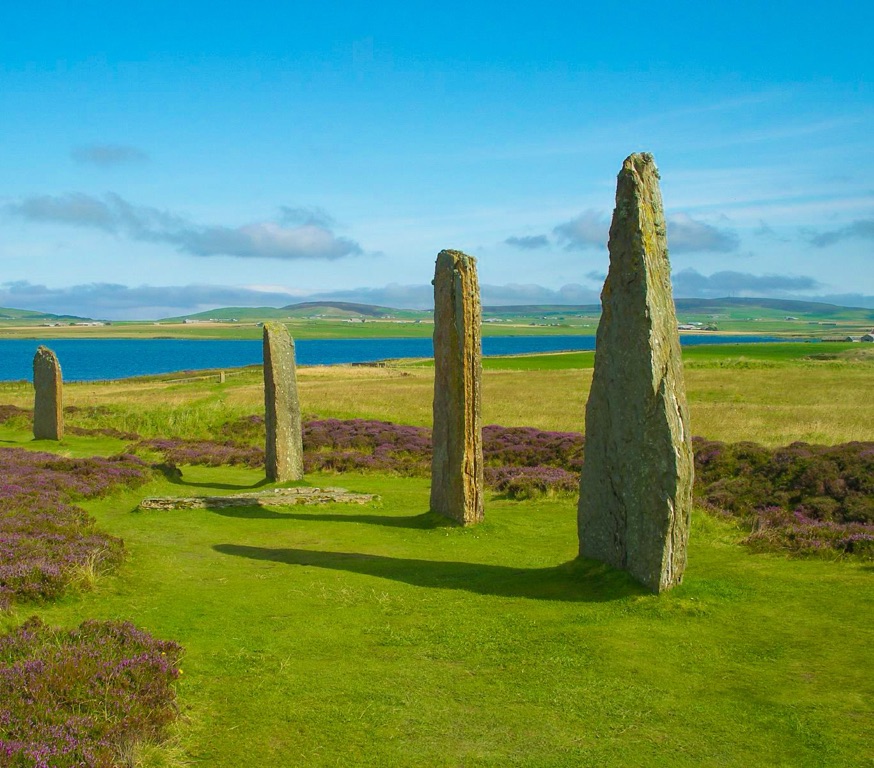Summary
A Glimpse into Prehistoric Orkney
Nestled in the heart of Scotland’s Orkney islands lies the Ring of Brodgar, a majestic stone circle encompassing mystery and beauty. This Neolithic wonder, part of the Heart of Neolithic Orkney World Heritage Site, draws tens of thousands of visitors yearly. The site commands awe with its grandeur and puzzles historians and archaeologists with its purpose. Spanning approximately 104 meters in diameter, the Ring of Brodgar comprises upright stones, some reaching up to 4.5 meters tall. Modern interpretations suggest the ring served as a ceremonial site, a place for rituals, gatherings, or an astronomical observatory marking seasonal changes.
Get your dose of History via Email
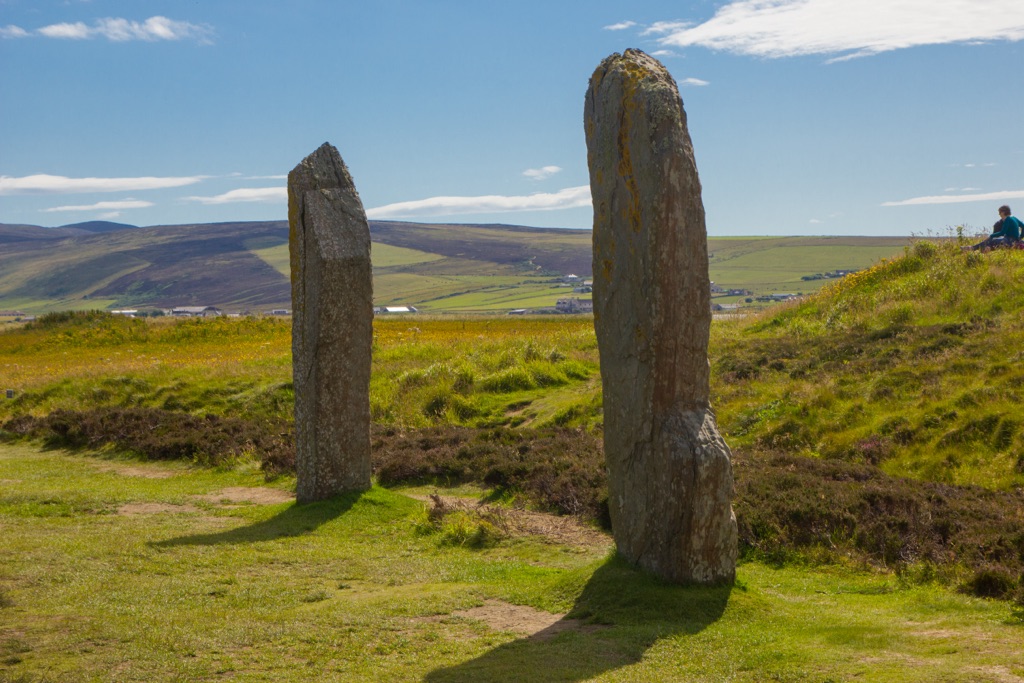
An Architectural Marvel of Ancient Times
Constructed between 2500 BC and 2000 BC, the builders of the Ring of Brodgar employed precise stone-working skills. Despite the lack of modern technology, they shaped and positioned the stones perfectly. The site is surrounded by a henge – a circular ditch and bank. The henge and stones align with the movements of the sun and moon, indicating a profound understanding of celestial events. Researchers surmise that these alignments might have been crucial for the agricultural calendar and religious events of the ancient society. The careful placement of each stone transforms the ring into a timeless astronomical calendar, etched in stone.
Preserving the Enigma for Future Generations
Today, the preservation of the Ring of Brodgar is crucial, as it offers invaluable insights into Neolithic life. The stones, though weathered by time and elements, still stand as sentinels to the past. Conservation efforts ensure this cultural gem remains unspoiled for future generations to marvel at and study. An understanding of its historical context allows visitors a rare glimpse into the lives of its creators. The Ring of Brodgar stands as a testament to the sophistication and ingenuity of the Neolithic people, whose legacy continues to inspire awe and wonder.
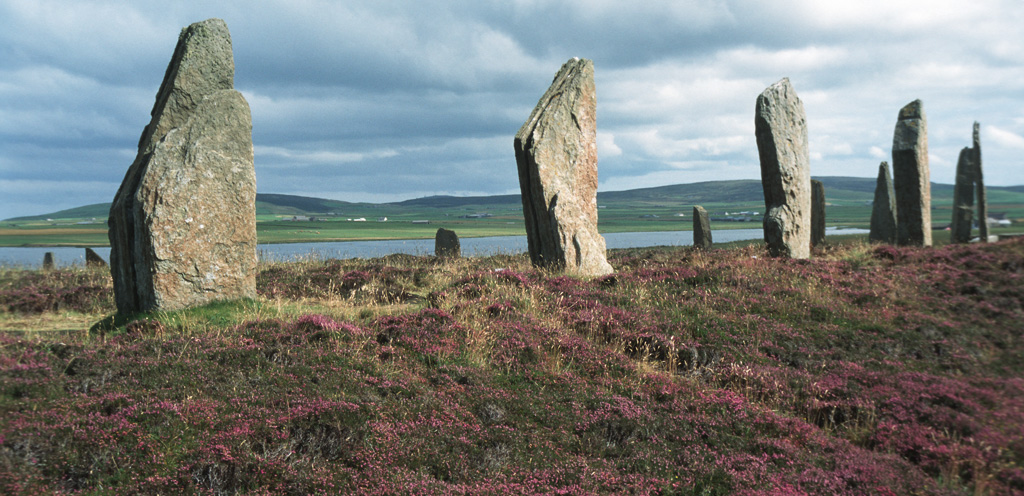
Historical Background of The Ring of Brodgar
An Ancient Neolithic Treasure
The Ring of Brodgar is a prehistoric monument shrouded in mystery and awe. Situated in Orkney, Scotland, this large stone circle dates back to the third millennium BC, making it older than Stonehenge and the Great Pyramids of Giza. Consisting of originally around 60 megaliths, of which 27 remain standing, the Ring of Brodgar is part of a complex landscape of ceremonial structures that reflects the sophistication of Neolithic Orkney. The circle measures roughly 104 meters in diameter and stands on a narrow peninsula flanked by two lochs, offering breathtaking scenery.
A Monument to Ingenuity
The ring’s builders exhibited remarkable knowledge in its construction. They placed the stones in a perfect circle using tools and techniques that have been lost to time. Interestingly, none of the stones are the same; they vary in height, shape, and structure, suggesting that each stone could represent a particular astronomical event or seasonal marker. Moreover, the site features a surrounding ditch, which points to significant effort and community involvement in the site’s creation. The intricacy of the work, the placement, and the size of the stones indicate significant respect for this site from its original builders.

A Cultural and Astronomical Puzzle
Researchers speculate that the Ring of Brodgar held a dual purpose: ceremonial and astronomical. The precise alignment of the stones with the winter and summer solstices suggests a deep understanding of the yearly cycle. Such a configuration would have served as a powerful tool for marking significant occasions, strengthening community bonds, and passing down knowledge. Yet, without any written records, the exact reasons for and methods of its use remain an enigma that continues to draw the curiosity of experts and visitors alike.
The Ring of Brodgar is more than a walk through ancient history; it is a symbol of human endeavour. No written records or definitive evidences have survived to unravel its mysteries fully. That leaves us imagining the sounds and sights that might have accompanied the ceremonies performed here. Were the gatherings solemn or festive, simple or elaborate? As we walk among these ancient stones, echoes of the past challenge us to piece together the life, beliefs, and purposes of those who stood here over 4,000 years ago.
Though millennia have passed since its construction, the Ring of Brodgar today is a protected site, preserved for its historical, cultural, and environmental significance. Efforts to understand and preserve the ring continue, cementing its place as a timeless link to our Neolithic ancestors. It stands as a monument to human creativity and to the timeless desire to mark our existence and experiences in the landscape around us. As a place of tranquility and power, the Ring of Brodgar stirs the imagination and connects us to a distant, yet familiar, past.
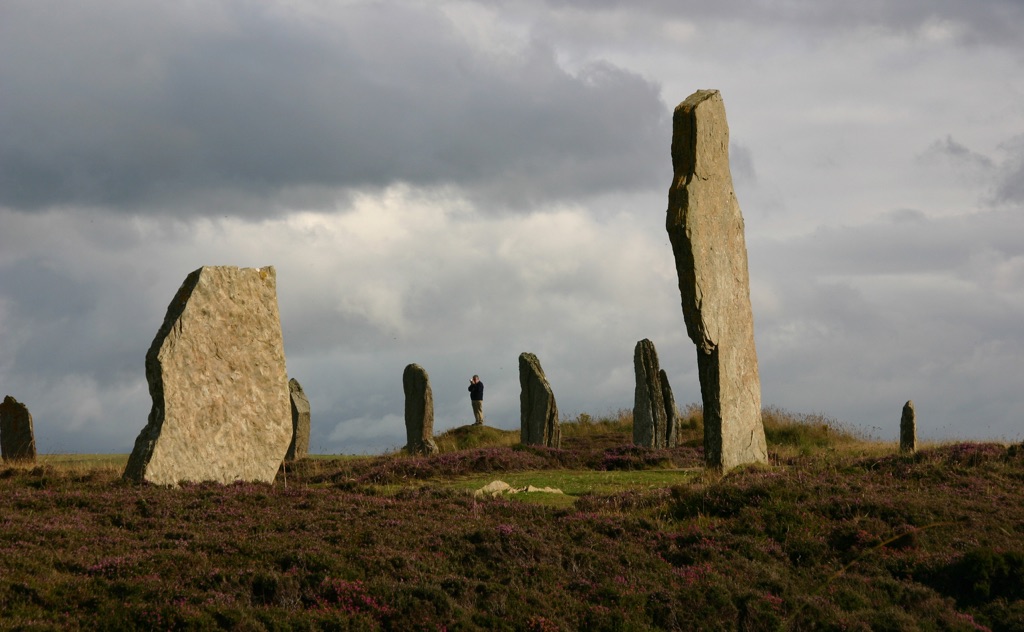
The Discovery of The Ring of Brodgar
Unveiling a Prehistoric Masterpiece
While the Ring of Brodgar has been part of Orkney’s landscape for thousands of years, its recognition as an archaeological treasure came much later. The enormity of the site and its stones have likely always been a point of intrigue for the locals of Stromness and nearby areas. As early as the 18th century, antiquarians began to take notice. Captain F.W.L. Thomas, a naval officer and antiquarian, carried out some of the first scholarly surveys of the site in the 1850s, sketching the earliest detailed diagrams of the stones.
From Obscurity to Fame
The turn of the 20th century brought more formal recognition to the Ring of Brodgar and its importance. Archaeologists began earnest excavations and studies, revealing more about the monument’s purpose and construction. Over the years, the Ring of Brodgar became well-known as part of the Heart of Neolithic Orkney, a group of sites that includes the Stones of Stenness and the Maeshowe chambered cairn. The entire area was inscribed as a UNESCO World Heritage Site in 1999, bringing it to worldwide prominence.
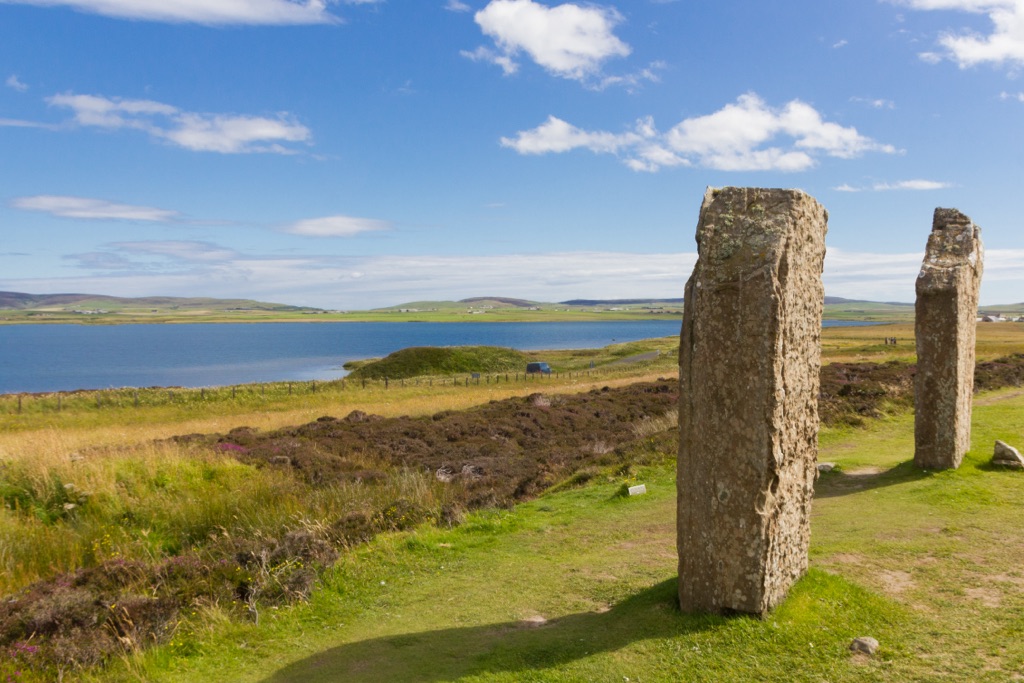
Scientific Investigations and Revelations
Modern archaeology has employed various scientific techniques to uncover the ring’s secrets. Carbon dating of material from around the site confirms the Ring of Brodgar’s construction dates back to between 2500 and 2000 BC. Studies of the surrounding area have revealed a wealth of prehistoric life, including domestic buildings and evidence of agriculture, suggesting a well-developed society. The monument’s alignment with celestial events has also been thoroughly explored, a fact which underscores its likely significance in prehistoric times.
In recent years, geophysical surveys have shown that the Ring of Brodgar is just one component of a vast complex of ancient monuments. These sophisticated technologies revealed unknown anomalies and features underground, hinting at yet-undiscovered structures connected to the ring. This finding has shed light on the possibility of an extensive Neolithic cultural landscape spread across Orkney’s Mainland.
Today, the discovery of anything new at the Ring of Brodgar is a rare event, as much of the site remains untouched by deep archaeological digs to preserve its integrity. Still, the Ring of Brodgar continues to reveal its history in small doses, with each new finding contributing to a broader understanding of its creators and their world. As ongoing research and careful site management continue, the Ring of Brodgar will undoubtedly keep its place as a centrepiece of Neolithic history for future generations to explore and admire.
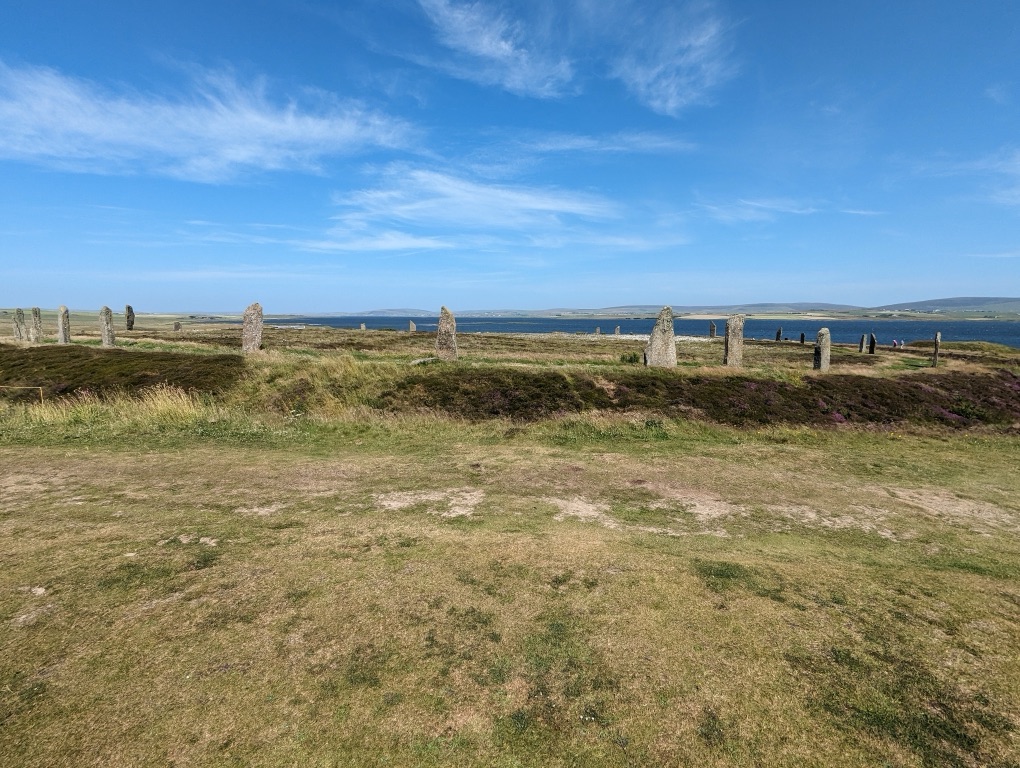
Cultural Significance, Dating methods, Theories and Interpretations
Neolithic Orkney’s Cultural Beacon
The Ring of Brodgar stands as a majestic symbol of Neolithic Orkney, embodying the cultural and societal complexities of its time. Its sheer scale and sophistication suggest it was a site of great significance, potentially used for rituals, communal gatherings, or astronomical observations. Such monuments are central to understanding the communal ideologies of ancient societies, as they reflect the social and religious practices of the period.
Chronology Unearthed
Dating methods like carbon dating, dendrochronology, or stratigraphic analysis often reveal the age of archaeological sites. However, at the Ring of Brodgar, such methods are challenged by the scarcity of organic remains. Scientists estimate its construction to the late Neolithic period, around 2500-2000 BC, largely based on the typology of artifacts and the geological study of surrounding peat deposits, which can help create a chronological landscape for the site.
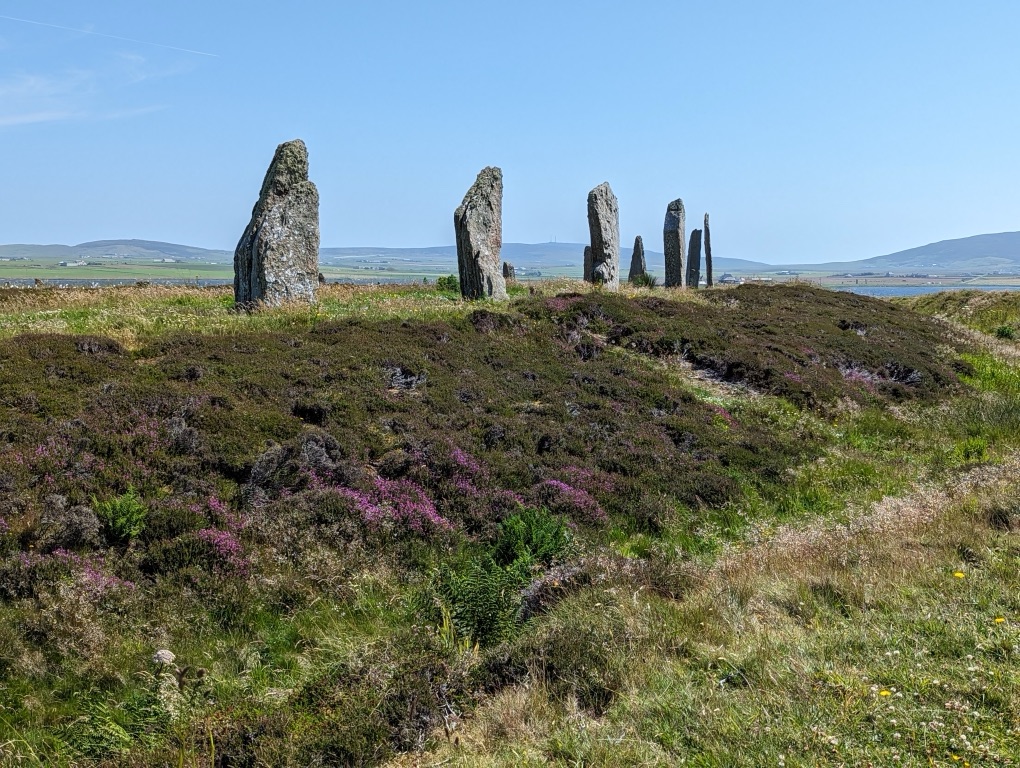
Interpreting the Stones
Theories abound regarding the Ring of Brodgar, with interpretations of its purpose ranging from an astronomical calendar to a symbol of political power. Some suggest that the alignments of the stones with the solstices and equinoxes had calendrical functions, aiding in the planning of agricultural activities. Others interpret it as a sacred space, designated for ritualistic activities which bound the community together. However, without concrete evidence, these theories invite more research and debate among historians and archaeologists.
Despite the lack of written records from the Neolithic period, the Ring of Brodgar’s structure offers clues to its possible uses. Its circular design is a common feature in sites thought to have religious or cosmological significance. Moreover, artifacts found nearby, including pottery and tools, provide a cultural context that hints at the site’s use. Archaeologists continue to analyze these finds, hoping to better understand the site’s role in Neolithic life and society.
The interpretation of ancient sites often evolves with new findings and research methods. The Ring of Brodgar is no exception. As a monument central to the Heart of Neolithic Orkney UNESCO World Heritage Site, its importance is unquestioned, even if its precise functions remain a matter of conjecture. Regardless, it stands as an enduring symbol of a bygone era, offering a window into the life and beliefs of our ancestors.
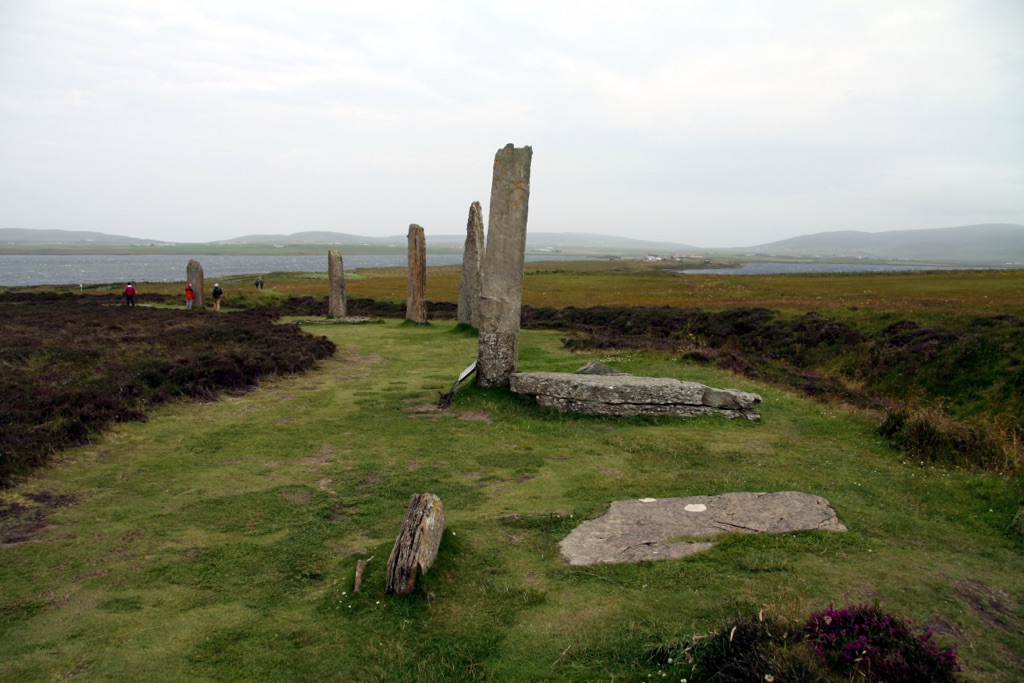
Conclusion and Sources
The Ring of Brodgar, a remarkable symbol of prehistoric ingenuity and spirituality, continues to be the subject of fascination and study. While we may never fully grasp the intent or beliefs of its creators, the ring’s grandeur and complexity speak to a deep cultural significance. The site remains an awe-inspiring testament to the Neolithic people’s astronomical knowledge, social structure, and worldviews. As a cultural cornerstone of Neolithic Orkney, it provides a tangible connection to our distant ancestors, allowing us to ponder and appreciate the richness of human history.
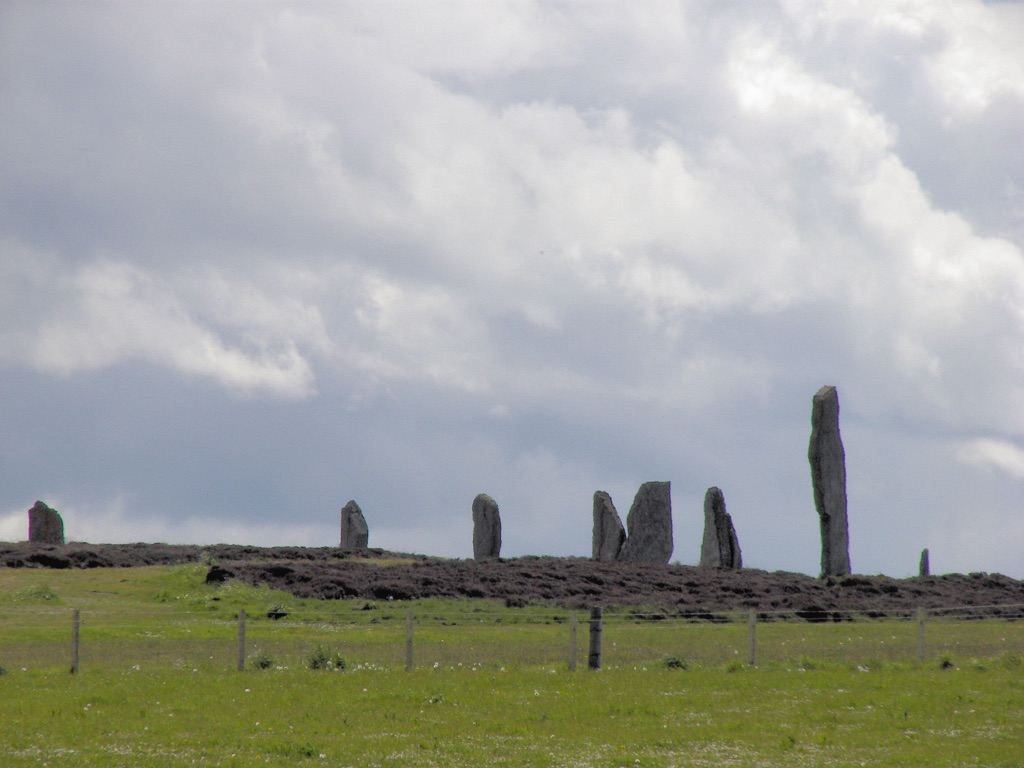
For further reading and to validate the information presented in this article, the following sources are recommended:
Or you can check any of these reputable archaeological and historical texts:
Renfrew, C., 1979. Investigations in Orkney. London: Society of Antiquaries of London.
Ritchie, A., 1995. Prehistoric Orkney. Edinburgh: B.T. Batsford Ltd.
Childe, V.G., 1952. “Scotland Before the Scots.” London: Methuen & Co.
Card, N., 2017. “The Ness of Brodgar: As it Stands.” Orkney: The Ness of Brodgar Trust.
Towers, R., Card, N., and Edmonds, M., 2015. “The Large Geometric Enclosures of Late Neolithic Orkney: Origins, Purpose and Context.” Proceedings of the Society of Antiquaries of Scotland, 145, pp.287-324.

